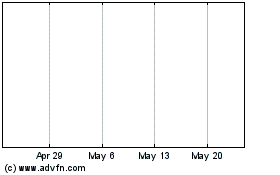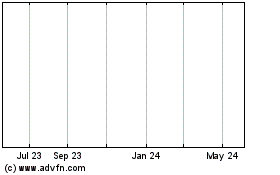UPDATE:Lehman Files New Creditor Payback Plan With Broader Support
June 29 2011 - 2:20PM
Dow Jones News
Lehman Brothers Holdings Inc. (LEHMQ) early Wednesday filed a
revised plan to repay creditors that has much broader support than
its previous proposals and could result in other parties
withdrawing their rival plans and a final deal being confirmed by
the court before the end of the year.
In a filing with the U.S. Bankruptcy Court in Manhattan, Lehman
unveiled a proposal that most major objectors deem fair enough,
according to people familiar with the weeks of tense negotiations
that led to the filing of the new plan.
In all, the plan has the support of creditors representing more
than $100 billion worth of Lehman's debt, according to a person
familiar with the matter. That number includes most of the largest
creditors in the case, the person said, and most notably represents
a compromise between major creditors of both the Lehman parent
company and its various subsidiaries.
Lehman's collapse in September 2008 marked the largest U.S.
bankruptcy case ever filed. Since then, a team of hundreds of
bankruptcy professionals under the direction of restructuring firm
Alvarez & Marsal has managed Lehman's assets, which include
real-estate holdings, corporate debt and derivatives, for the
benefit of creditors.
"The recoveries to creditors of each debtor under this plan are
based upon a global resolution of complex plan issues," Lehman said
in its filing, adding that the plan could still change. "Major
constituencies" in the case have reached an "agreement in principle
with Lehman," Lehman added.
The keys to the compromise are that certain percentages of the
money owed to creditors of the subsidiaries of Lehman will be
reallocated to creditors of the parent, and creditors of the
subsidiaries have agreed to a cap on some of their claims.
Holders of bonds of the Lehman parent company would receive
slightly less--about 21.1 cents on the dollar--compared with 21.4
cents in a prior plan. A group including hedge-fund manager Paulson
& Co., which represents about $20 billion mostly in those
bonds, had filed its own proposal late last year that pushes for a
24% recovery for senior unsecured creditors of the parent company
at the expense of creditors of the subsidiaries. A key benefit to
those bondholders in the new compromise would be the faster
timetable that a consensual plan would provide. Sources said
creditors could start receiving recoveries during the first quarter
of 2012.
Creditors of Lehman's many subsidiaries, some of whom are large
banks, still stand to recover more than those of the parent. Some
creditors of Lehman's Specialty Finance Unit--the heart of the
failed investment bank's derivatives business--will receive more
than 30 cents on the dollar. Those creditors would have received
recoveries in the low 20s under a prior Lehman plan, although the
new plan calls for a cap on how much they can claim.
A group led by Goldman Sachs Group Inc. (GS) and
distressed-investment firm Silver Point Capital had spearheaded a
third plan that argued subsidiaries' creditors were getting hurt at
the hands of creditors of the parent, but according to two people
familiar with the matter, Goldman and Silver Point are on board
with the new proposal. Their proposal would have only paid senior
bondholders of the Lehman parent about 16 cents on the dollar.
Some banks that are creditors of Lehman still have problems with
the new plan, one person said.
One of the Paulson-led group's main problems with both the
Lehman plan and the plan proposed by the Goldman/Silver Point group
was the way they handled intercompany claims between various Lehman
businesses. Some creditors would have been receiving a double
recovery, or double dip, the Paulson group argued. Lehman's new
plan offers a compromise on that issue, even though the banks still
fare well compared with many other creditors.
For instance, creditors of a Dutch subsidiary with $34.5 billion
worth of intercompany claims would have previously been able to
assert a claim for double that amount. Under the compromise, those
creditors have accepted a cap on their claims that comes out to
about 1.77 times the $34.5 billion, rather than double.
The new Lehman plan also proposes corporate governance changes
that would allow representation on Lehman's board of directors from
several of the creditor constituencies, including the ad hoc
bondholders. One person familiar with the plan negotiations said
the board of directors issue is far from finalized, as all parties
are concerned with who will manage Lehman's assets after its plan
is confirmed.
Lehman estimated earlier this year that it would likely have
$322 billion in allowed claims against the estate, with $272
billion from the parent company and about $50 billion from its
various subsidiaries. The bank increased creditors' expected net
recovery by $2.6 billion from the $57.5 billion it estimated in a
September court presentation.
A judge earlier this year said the three competing plans could
be considered on the same timetable, although it appears the
Goldman and Paulson-led plans may soon be withdrawn. A hearing on
whether creditors can vote on Lehman's plan had been scheduled for
July 20, but will probably pushed back to late August, according to
one of the people familiar with the negotiations.
(Dow Jones Daily Bankruptcy Review covers news about distressed
companies and those under bankruptcy protection.)
-By Joseph Checkler, Dow Jones Newswires; 212-416-2152;
joseph.checkler@dowjones.com
Lehman (NYSE:LEH)
Historical Stock Chart
From Jun 2024 to Jul 2024

Lehman (NYSE:LEH)
Historical Stock Chart
From Jul 2023 to Jul 2024
